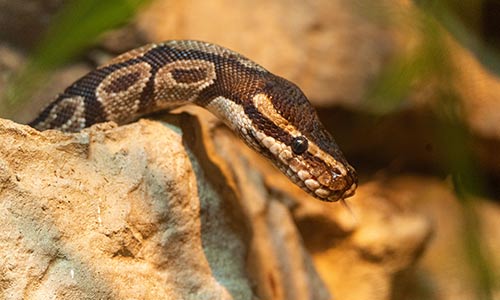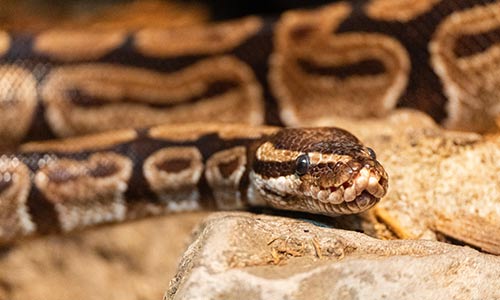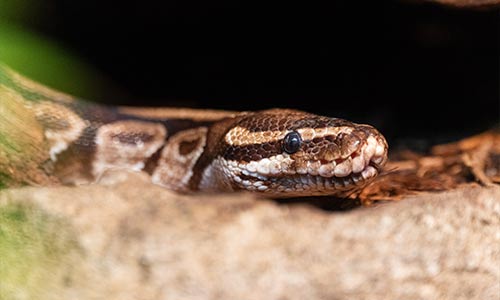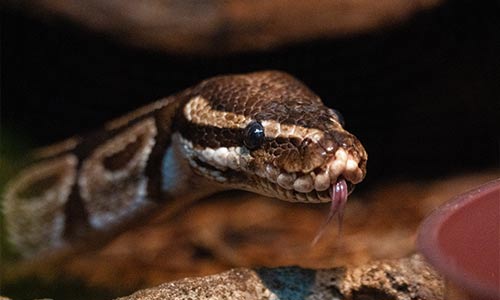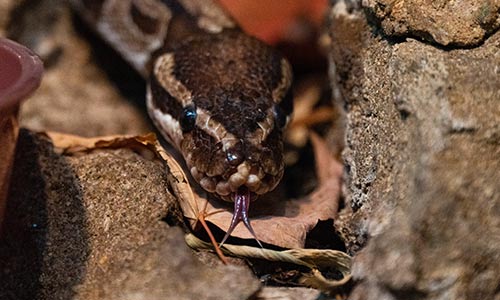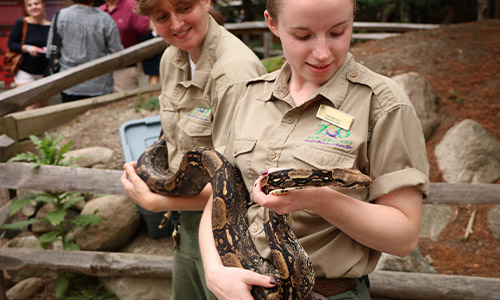Ball Python
Python regius
About the Ball Python

Class: Reptilia
Order: Squamata
Suborder: Serpentes
Family: Pythonidae
Genus: Python
Species: regius
The ball python is the smallest of the African python species and is a nocturnal hunter. These snakes are a non-venomous constrictor species, meaning they catch prey by wrapping their body around the prey and constricting it. Prey includes amphibians, lizards, snakes, birds and small mammals.
Ball Python Facts
Appearance:
Ball pythons are black in color with light brown or gold sides and dorsal blotches. Their bellies are typically white or cream and may or may not have black markings. This species is the smallest of the African pythons.
Size:
Length: 92-122 centimeters (36-48 inches)
Reproduction:
Ball pythons are oviparous, meaning they lay eggs to reproduce. Their breeding season spans mid-September through mid-November, during the rainy season. Incubation of the eggs last for around 90 days, during which time the mother will coil around eggs to keep them warm. Female ball pythons typically lay between 3-11 eggs at a time. Females grow to maturity at the age of 24-36 months, while males mature at 12-18 months of life.
Life Expectancy:
Ball pythons typically live to be up to 10 years old in the wild.
Habitat:
These snakes inhabit areas of mixed grassland, sparsely wooded areas, and savanna in Western and West Central Africa.
Diet:
Ball pythons are a non-venomous constrictor species, meaning they catch prey by wrapping their body around the prey and constricting it. Prey includes amphibians, lizards, snakes, birds and small mammals.
Behavior:
This snake species is entirely nocturnal, meaning it is active solely at night. This snake spends its days in underground rodent burrows and termite mounds, sunbathing for warmth when needed.
You Can Find This Animal in the Tropical Forest
A Very Royal Python
Ball pythons are also called “royal pythons” due to the myth that Cleopatra wore one around her wrist.
You May Also Like
At Franklin Park Zoo:
At Stone Zoo:

